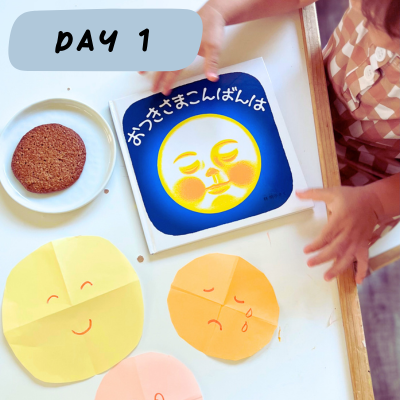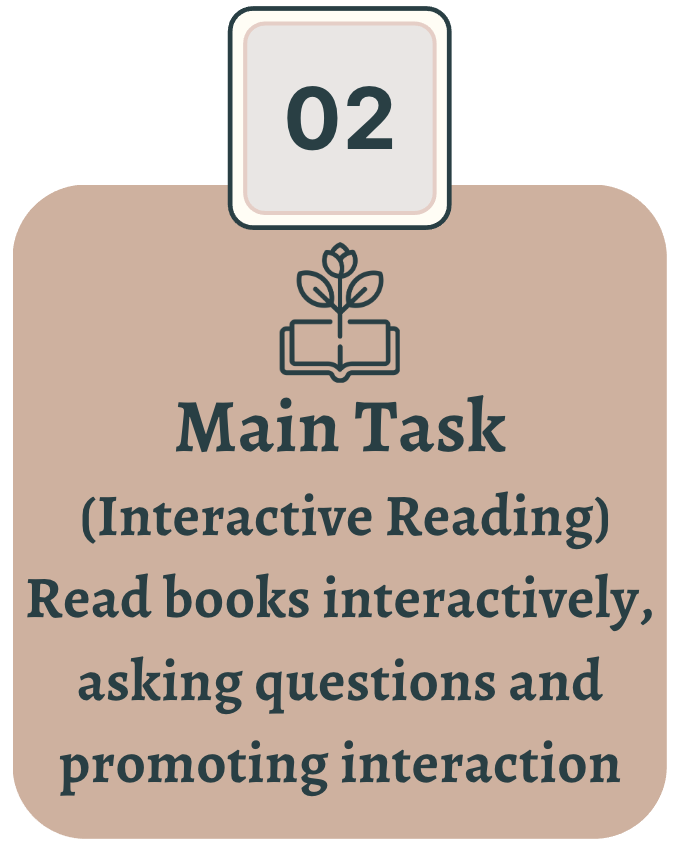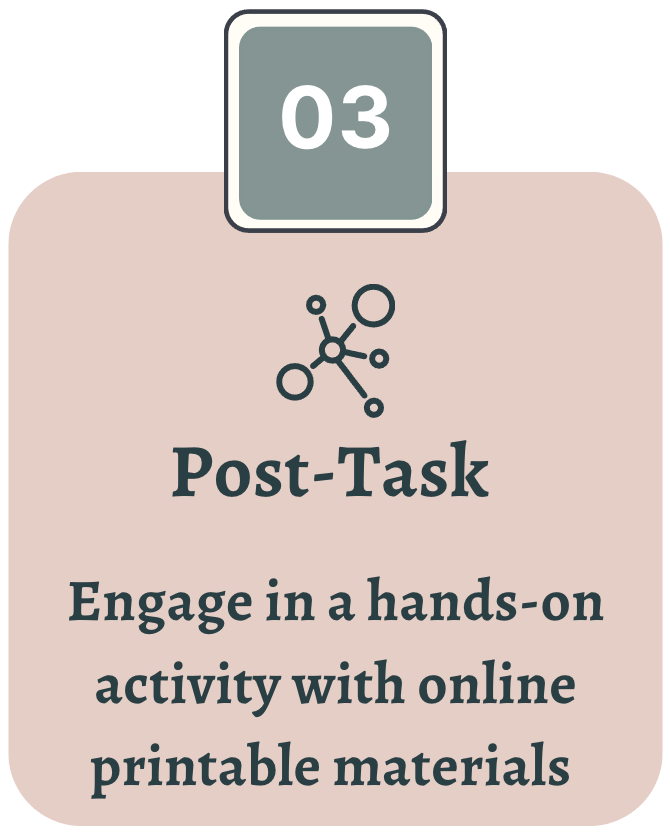Otsukimi is held in mid-September, the day when the moon looks the most beautiful of the year. The beauty of the moon is appreciated with cultural symbolism: pampas grass, dango (rice cakes), and seasonal fruits such as persimmons and chestnuts, which are offered as a tribute to the moon for a good harvest.
Day 1
Origami Moon
- Read a book and make origami moon faces with different facial expressions, including the four basic emotions: happy, sad, angry, and afraid (fear).
- Enhance cultural relevance learning a little about Moon Viewing Day.
- Build self-awareness skills and develop fine motor skills.

Day 2
Emotion Moon Puppet
- Sing, read and enjoy pretend play with emotion puppets expressing different emotions with the strong help of gestures, visuals or onomatopoeia.
- Enhance cultural relevance learning a little about Moon Viewing Day.
- Stimulate imagination and creativity.
Reflection: Have a learner look at the moon and encourage to imagine how the moon feels that day.

Day 3
Emotion Moon Puppet
- Repeat Day 2 lesson.
- Have a learner watch an interactive reflection video and respond to the questions independently.


Before the song video, introduce Moon Viewing Day by saying, “We’re going to see the most beautiful full moon on Otsukimi (Moon Viewing Day).” Then, ask a pre-listening question: “Can you find which animals appear during the song? They are symbols of Otsukimi. ” After watching the video, have the learner express the animals either verbally or with gestures. The rabbit on the moon is a well-known legend in Japanese folklore.


Read the book おつきさま こんばんは (Good Evening Mr. Moon) interactively which is such a calm, simple, charming book for little children.
For the book information on Amazon➤
If there is no access to the book, use this YouTube video➤
How to read interactively? Ask questions or offer commentary to promote the child’s comprehension and curiosity. Here are some example comprehension questions you can ask in a child’s first or target languages:
“How is the moon feeling now? (Otsukisama, donna kimochi kana?)”
“Who is bothering the moon? (Darega Otsukisama wo jyama shiteru?)”
“What happened to the moon? (Otsukisamani naniga atta?)” or “I would not be happy if the cloud covers my face! How about you? (Watashidattara, kumoni kaowo kakusaretara iyadana. Anatawa?)”


Enjoy creating and engaging in pretend play with Origami moon faces!
- Demonstrate how to make origami moon faces and draw different facial expressions on the moons to represent various emotions, including the four basic emotions: happy, sad, angry, and afraid (fear).
- Most importantly, promote conversation with the child, using the target emotion vocabulary through child-led pretend play.
- As usual, we end the activities with a food related to the theme. This time, since the focus was on the moon shape, our child enjoyed a moon-shaped cookie at the end.
Click below to see the activity video on Instagram↴

Before the song video, remind the learner of the symbol of Moon Viewing Day, Tsuki (moon). On the second or third day of using the same song, shift the focus from providing input to encouraging the learners to produce language by singing autonomously, with or without an instrument, and with or without the video.

Repeat Day1 interactive reading using the same book, as shown above.



Enjoy pretend play with moon emotion puppets!
- Using puppets created from online printable materials, have a learner make guesses by asking, ‘How does the moon feel? どんな きもち?’ Show and hide each emotion puppet quickly with the puppet cover while a learner guesses. Use onomatopoeia and gestures to express each emotion.
- During pretend play, focus on demonstrating emotions to encourage a learner to imitate your speech and actions.
Click below to see the activity video on Instagram↴
Repeat Day 2 lesson. For reflection and/or assessment, have the learner watch the short interactive video and respond to the questions independently.
←Click to watch the video
As reflection, enjoy the following activities:
- Have a learner watch the same reflection video and respond to the questions independently. Assess how they can express the target vocabulary and phrases interactively while watching. Click the button to download the assessment rubrics.
2. Visit and participate in Otsukimi (Moon Viewing Day) cultural events to interact with community members, if available.



